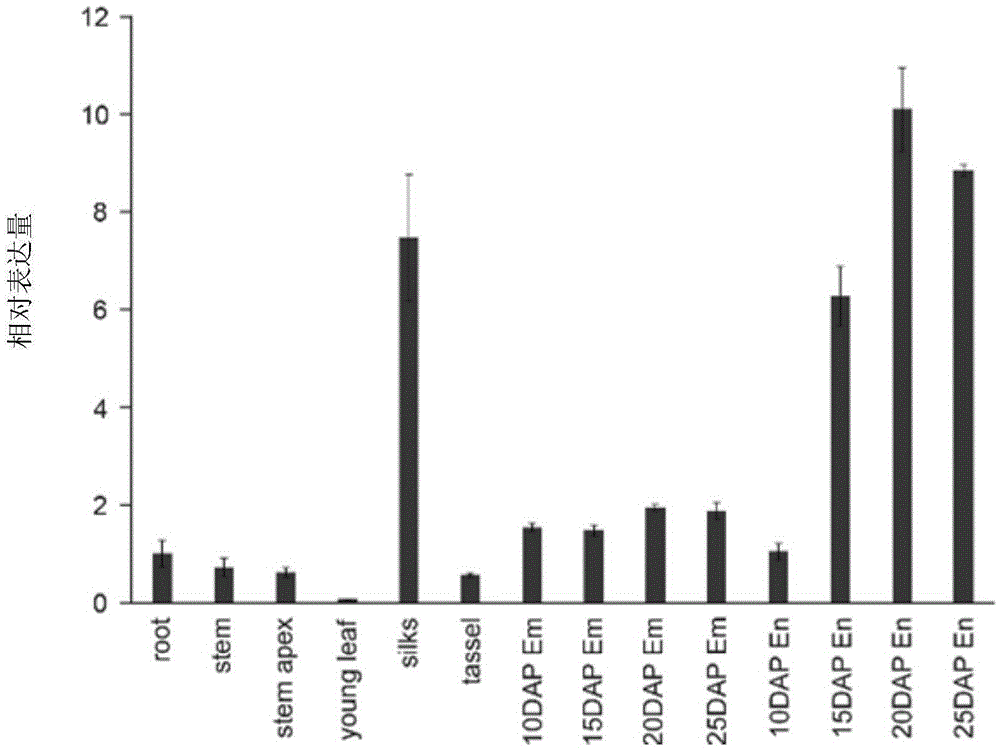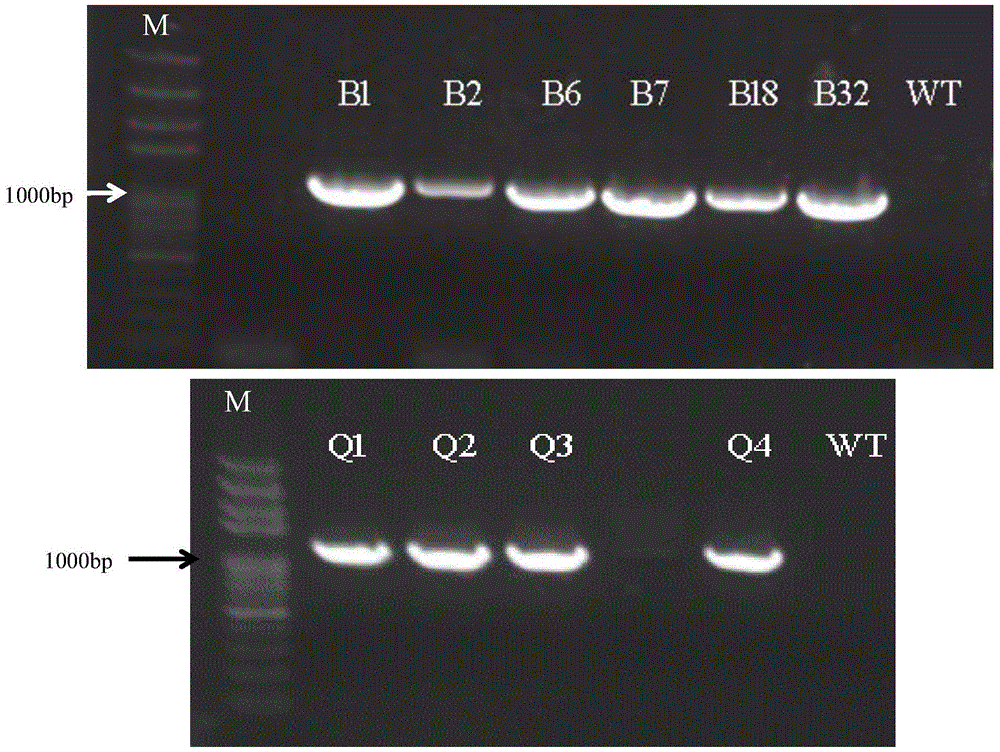Application of maize gene ZmGFT1 in increasing folic acid content in plants
A corn and folic acid technology, applied in the fields of genetic engineering and molecular biology, can solve the problems of folic acid deficiency and difficult to achieve, and achieve the effect of increasing folic acid content and relieving invisible hunger
- Summary
- Abstract
- Description
- Claims
- Application Information
AI Technical Summary
Problems solved by technology
Method used
Image
Examples
Embodiment 1
[0037] Cloning and Transformation of Example 1 Maize ZmGFT1 Gene
[0038] The leaves of maize inbred line Qi319 were collected, the total RNA of maize was extracted by trizol method, and the cDNA of maize was obtained with RevertAidFirstStrandcDNASynthesisKit (Thermo). Using maize cDNA as a template, 4863CDS-BglII-F and 4863CDS-BstEII-R as amplification primers, the full-length CDS of the GRMZM2G124863 gene was amplified ( figure 1 A). The plasmid containing the full-length CDS sequence of GRMZM2G124863 was correctly sequenced and digested with BglII and BstEII, and the fragment was ligated into ubiquitin-pCAMBIA3301 after digestion. The full-length CDS of the Qi319GRMZM2G124863 gene (ZmGFT1 gene) was amplified using the cDNA of the maize inbred line Qi319 (S2069 genotype is G) as a template and ZM-FAB4863-CDS-F and ZM-FAB4863-CDS-R as amplification primers ( figure 1 B). The correct sequenced GRMZM2G124863 full-length CDS was recombined into the overexpression vector PH2G...
Embodiment 2
[0043] The expression pattern of embodiment 2ZmGFT1 gene in maize
[0044] Maize inbred line Qi319 was collected from tissues and organs at different development stages, such as roots, stems, shoot tips, young leaves, filaments, and embryos and endosperms of different days of pollination. Total RNA was extracted, and the expression of ZmGFT1 gene in maize was detected by microarray technology. The results showed that the expression of ZmGFT1 gene could be detected in the selected tissues and organs, and the expression level of ZmGFT1 gene was the highest in endosperm 20 days after pollination. The weakest expression of the gene ( figure 2 ).
Embodiment 3
[0045] Example 3 Identification of ZmGFT1 Transgenic Maize and Transgenic Arabidopsis Plants and Determination of Folate Content
[0046] The complete CDS sequence of ZmGFT1 was amplified from maize cDNA, and cloned into overexpression vectors pCAMBIA3301 and pH2GW7 by enzyme digestion and homologous recombination. The constructed ZmGFT1-pCAMBIA3301 was transformed into maize callus through Agrobacterium-mediated genetic transformation to obtain transgenic maize plants. The obtained transgenic plants were identified by PCR ( FIG. 3 ), and the leaf materials of the identified positive plants were taken for folic acid determination. The constructed 73GFT1-pH2GW7 and 319GFT1-pH2GW7 were used to infect col wild-type Arabidopsis thaliana by flower dipping method, and the obtained T0 generation seeds were screened on hygromycin resistance plates. The screened transgenic positive plants were transferred to the culture soil, and when the material was available, the leaves were taken ...
PUM
 Login to View More
Login to View More Abstract
Description
Claims
Application Information
 Login to View More
Login to View More - R&D
- Intellectual Property
- Life Sciences
- Materials
- Tech Scout
- Unparalleled Data Quality
- Higher Quality Content
- 60% Fewer Hallucinations
Browse by: Latest US Patents, China's latest patents, Technical Efficacy Thesaurus, Application Domain, Technology Topic, Popular Technical Reports.
© 2025 PatSnap. All rights reserved.Legal|Privacy policy|Modern Slavery Act Transparency Statement|Sitemap|About US| Contact US: help@patsnap.com



